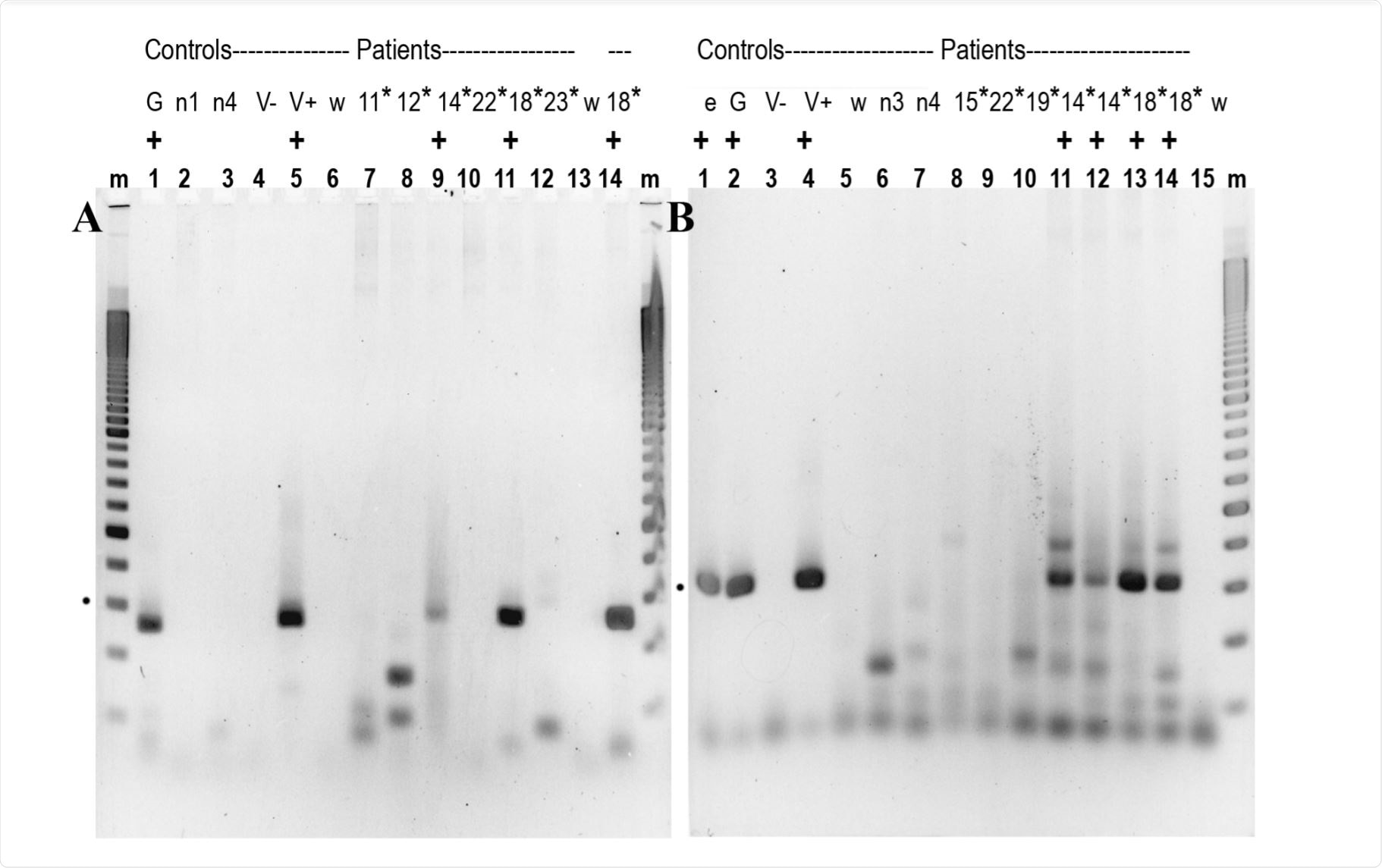A meeting with doctors from Wuhan presented a compelling observation to Professor Laura Manuelidis, MD, from the Yale Medical School early in 2020. A striking feature in one slide presented by the doctors provided the impetus to interesting research: the pathology of interstitial pneumonia was dominated by many large cells that were most consistent with a myeloid lineage.

A 2.5% agarose gel showing RT/qPCR products. Image Credit: https://www.biorxiv.org/content/10.1101/2020.12.16.423113v1.full.pdf

 *Important notice: bioRxiv publishes preliminary scientific reports that are not peer-reviewed and, therefore, should not be regarded as conclusive, guide clinical practice/health-related behavior, or treated as established information.
*Important notice: bioRxiv publishes preliminary scientific reports that are not peer-reviewed and, therefore, should not be regarded as conclusive, guide clinical practice/health-related behavior, or treated as established information.
Her team decided to find if the severe acute respiratory syndrome coronavirus 2 (SARS-COV-2) infection of the Peripheral Blood Mononuclear Cells (PBMC) occurs and maybe it could be a source of the multi-organ spread in the human body. Viruses are known to release free viral particles into the bloodstream or travel within the white blood cells in the host. Many viruses infect PBMC that can be a reservoir for persistence.
It might be possible that SARS-CoV-2 infected migrating myeloid cells take up residence in and perpetuate infection and chronic pathology in the brain and other organs. The COVID-19 pandemic caused by the SARS-CoV-2 has increasingly presented brain and heart pathologies (that were predictable).
Post COVID-19 infection, neurologic complications, and neuropathology are reported, e.g., thromboemboli, infarction, radiologic changes consistent with autoimmune encephalitis, and even the presence of SARS-CoV-2 in neurons. Little is known about potential immediate viral or late immunologic SARS-CoV-2 effects on the brain.
Prof Laura Manuelidis and her team from the Yale Medical school show evidence of SARS-CoV-2 nucleocapsid in the peripheral blood mononuclear cells (PBMC) in a recent bioRxiv* preprint publication. They found over 300nt of SARS-CoV-2 nucleocapsid RNA in PBMC - indicating these cells can be a conduit for the spread of the virus, or viral elements, to other organs.
The researchers first analyzed a standard short nucleocapsid (NC) 72bp sequence of the SARS-CoV-2. The NC proteins protect the viral genome. Therefore, they further analyzed longer (301nt) adjacent NC stretches by RNA/qPCR.
The study cohort included 7 male and 7 female patients ranging from 24-82 years and 4 random uninfected control volunteers. PBMCs from these 14 patients were taken 2-6 days after hospital admission with a positive COVID-19 swab test.
In this study, the patients were sampled only at a one-time point in the disease. Because of this, only 20% of the patients were positive.
In 2 patients PBMC (but not in the uninfected controls), they found longer NC sequences. These were positive as early as 2-6 days after hospital admission. They validated the presence of longer NC by sequencing.
Coronaviruses are complex and can elicit autoimmune responses that damage the brain and other organs. It is known that the respiratory coronaviruses, before the SARS-CoV-2 strain that causes human colds, are neuroinvasive. Its viral RNA is found in the brain parenchyma as well as in myeloid microglia in culture.
Sudden deaths occurring Infrequently from uncharacterized winter "viral" infections on routine autopsy shows classical acute lymphocytic and myeloid infiltrates in an otherwise normal heart. Some of these might be due to a coronavirus strain. The recent collapse of healthy young athletes may be caused by SARS-CoV-2 PBMC dissemination leading to vascular microthrombi in the heart and brain.
Apart from the neural olfactory spread, the researchers suspected the role of a subset of blood monocytes in the conduit of SARS-CoV-2 into the brain with subsequent development of neuropsychiatric symptoms.
The researcher advised on the methodology used - more quantitative NC RT/qPCR Cts should start with > 5e7 PBMC per individual. They explain that this number of PBMC allows for the sorting of PBMC subsets that concentrate SARS-CoV-2sequences.
The researchers thus warrant temporal evaluations at different phases of SARS-CoV-2 exposure; these can be used diagnostically.
The team suspects that a circulating myeloid cell type probably carries the viral sequences, especially because these cells take up residence in tissues and act as a latent source for infection and/or chronic immune stimulation. It is important to identify the positive cell subtypes and also see if these cells carry the infectious virus.
This study is important in pinning down an antibody and also other new strategies to prevent progressive spread to other organs. Research into the next level in this study to identify the positive cell subtype will also facilitate therapeutic approaches that specifically target these cells to prevent early dissemination of SARS-CoV-2, in part or whole, to other organs, the researchers write.
The presence of the nucleocapsid SARS-CoV-2 RNA, especially in migrating myeloid cells, might explain some of the pathologic observations found in other organs such as the brain, heart, and lungs - as was observed by this team in the case presented from Wuhan.

 *Important notice: bioRxiv publishes preliminary scientific reports that are not peer-reviewed and, therefore, should not be regarded as conclusive, guide clinical practice/health-related behavior, or treated as established information.
*Important notice: bioRxiv publishes preliminary scientific reports that are not peer-reviewed and, therefore, should not be regarded as conclusive, guide clinical practice/health-related behavior, or treated as established information.
Journal reference:
- Preliminary scientific report.
Detection of long SARS-CoV-2 nucleocapsid sequences in peripheral blood monocytes collected soon after hospital admission Nathan Pagano, Maudry Laurent-Rolle, Jack Chun-Chieh Hsu, the Yale IMPACT research team, Chantal BF Vogels, Nathan D Grubaugh, Laura Manuelidis. bioRxiv 2020.12.16.423113; doi: https://doi.org/10.1101/2020.12.16.423113